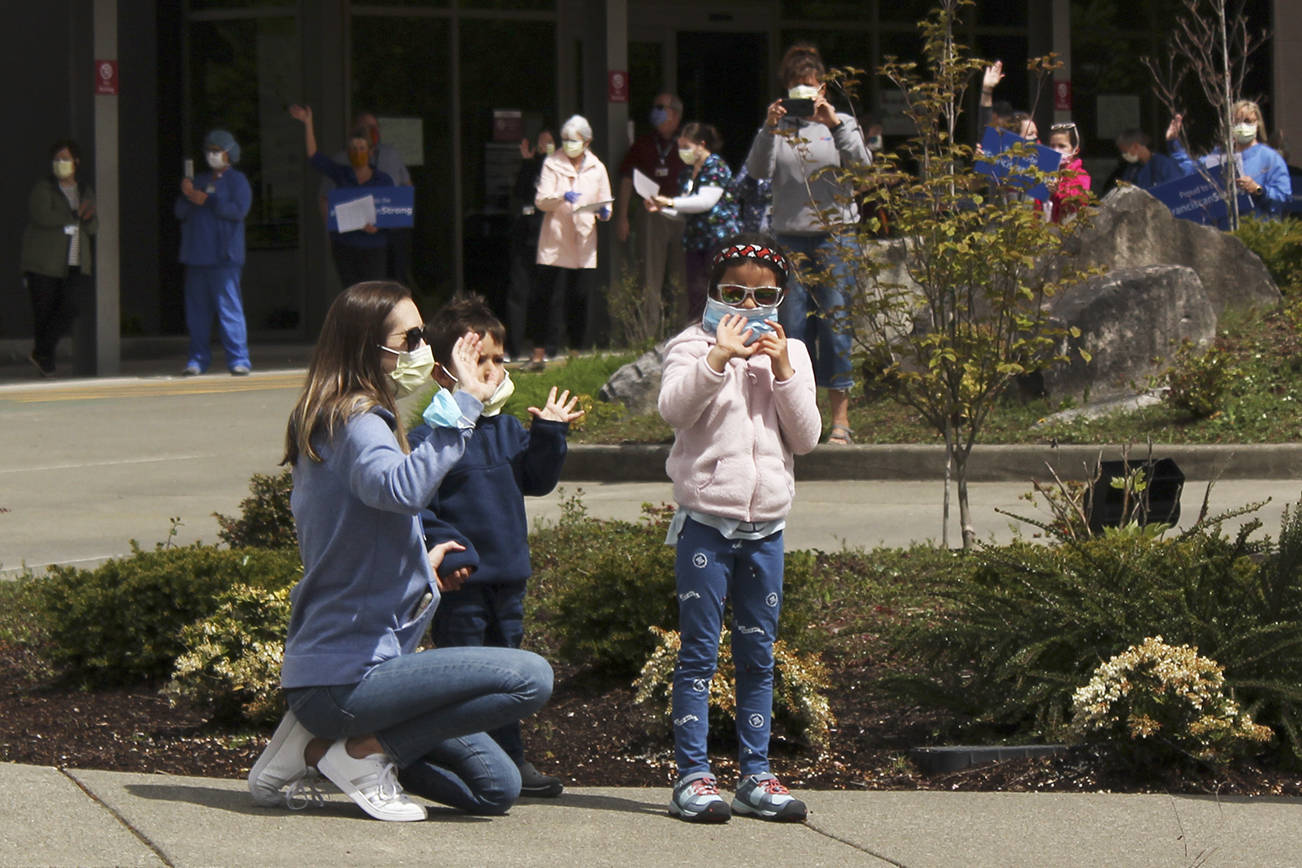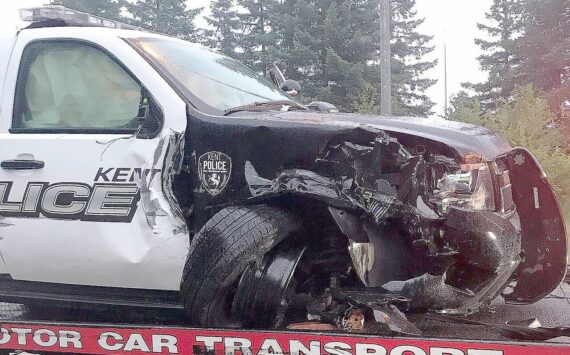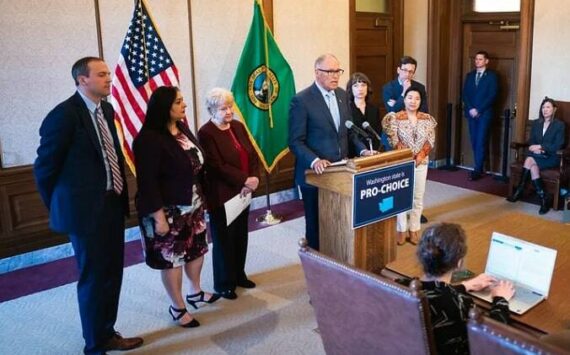How Washington state counts its COVID-19 deaths is a simple question.
Getting a final and correct answer for the state is not.
When someone dies, determining the cause can take anywhere from a day to six months, or even longer. It can be a slow and complicated process of investigating.
This new disease caused by coronavirus adds a contour of complexity as those on the front lines combating the virus — as well as the public which is living with and restrained by it — seek information on its toll in real time to devise the best strategies to hem in and halt its spread.
State health officials update the number of deaths each day — it stood at 1,044 on Thursday — knowing it is not an entirely correct figure but is the most accurate at that moment.
“This really has not been an easy task. We are providing the best information in the fastest way,” said Katie Hutchinson, health statistics manager for the Washington Department of Health. “Is it 100% accurate? Data never are. Is it the best we have at the time? Yes.”
This week, the Freedom Foundation, a conservative political organization which routinely fences with Democratic Gov. Jay Inslee, cast doubt on the official count, asserting it is inflated as much as 13% because it includes every person who had a positive test. At that time, the state had reported 1,000 deaths.
“Obviously, not every person who tests positive for COVID-19 and subsequently passes away dies because of COVID-19,” the group concluded in a report released May 18.
Inslee, at a televised news conference, said he had “no reason to doubt” the tally and fired back at the organization.
“I guess they’re saying that would make it 887 dead and that’s OK and we should not act responsibly if there are only 887 people instead of 1,000 people?” he said. “I’m not sure I understand that logic.”
State health officials acknowledged Thursday there will be subtractions, and possibly additions, in the course of time.
[infogram id=”1c857c3e-e41a-4e7a-a441-a65e734f630a” prefix=”MYS” format=”interactive” title=”The deaths”]
As of Thursday, they had identified about 30 deaths that could be removed from the count at some point. Fewer than five were people who died from gunshot wounds, Hutchinson said. The rest are cases requiring further investigation because the individuals had a positive test but their death certificates list causes like cancer, stroke, or Alzheimer’s. They will look to see if there is a connection.
And the toll could rise as well. Death certificates for about 100 people list COVID-19 as the cause but the state has no record they were ever tested or ever tested positive. So those fatalities are not in the official count.
“We cannot rule them in or rule them out,” Hutchinson said. “We suspect we may actually be undercounting deaths rather than overcounting. It may take up to a year, or more, to get final COVID death numbers.”
Finding the cause
When a person dies in Washington, within three days, a report must be entered into the state’s Electronic Death Registration System (EDRS) which contains information including the person’s name, date of birth and date of death. A section for the cause may, or may not, be fully completed in this initial report. In 2018, there were 56,913 deaths recorded in Washington.
Meanwhile, when someone tests positive for coronavirus — as nearly 20,000 people in Washington have since testing began — that information is compiled by public health officials into a separate database, the Washington Disease Reporting System (WDRS). This is used to track all communicable diseases.
Each day, state health employees are running names of those entered into the death registration system through the disease reporting system and where there’s a match, it is counted as a COVID-19 death. Each morning, the state will inform local health districts of new COVID deaths they’ve recorded in their respective communities. And usually, within a day, those deaths are added into the official count.
There’s another tricky area — where a person tests positive but their death certificate doesn’t list COVID as an immediate or contributing cause of death.
Death certificates can be signed by a county’s medical examiner or coroner, or a physician who may have treated a person before they died. They are referred to as certifiers. These days, a large majority will know if a death is linked to the disease.
Early in the pandemic, before the effects of coronavirus were widely known, some certifiers may have listed acute respiratory distress or pneumonia or stroke or other conditions as an immediate cause of death, unaware of the role COVID may have played, Hutchinson said. They may not have even known the person had tested positive.
If a certificate does not list COVID-19 as a cause, or contributing element, state health officials may contact the certifier to provide them information that they might not have had at the time they filled out the certificate, such as the test results. The certifier can then choose to amend the document but is not required to do so.
“There are a number of nuances to the data … and often it is very difficult to quickly assess cause of death,” Hutchinson said, noting it normally takes six months to a year to complete work on each reported death of any sort. “There are very few deaths that we are capturing that are not due to COVID.”
Death count might be higher
The Freedom Foundation asserts the state is capturing too many and it’s influencing public policy.
Maxford Nelsen, director of labor policy for the Freedom Foundation, said the group’s intent was not to politicize the numbers but to spotlight this one metric the governor considers when deciding how and when to relax social distancing restrictions aimed at curbing the virus’ spread.
“How many people died because of COVID? That’s what I think rational people want to know,” he said. “Inflating the numbers does nothing but further undermine trust in government.”
As certifiers gain greater knowledge of the effects of the disease, they can better ascertain its role in a person’s death.
“It’s become pretty obvious how to recognize and how to tell if a death is due to COVID,” said Jonathan Mayer, an infectious disease epidemiologist and University of Washington professor emeritus of epidemiology and medical geography.
As a result, he said he has “a great deal of confidence in the counts” posted daily by the Department of Health.
The daily count isn’t the only information public health officials and policy makers consider to protect communities from the virus.
Hutchinson, on Thursday, said there are 3,000 death certificates dating back to January with conditions similar to COVID listed in the causes of death. None of the people had tests for the virus. Some of those occurred before the state recorded its first known case in Snohomish County.
“It is going to be extremely hard to figure out if any of these are COVID-related,” she said. “It is more likely we are missing a larger chunk that we will never be able to report.”








